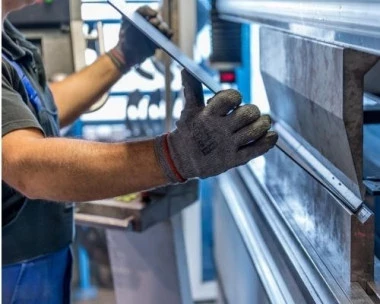Connected Worker Technology Investment a High Priority for Manufacturers
Add bookmark
Nearly one in five manufacturers are looking to invest in Connected Worker Technology to support remote operations, according to an informal IX Network webinar poll.
The technology topped the list with 19.7% of manufacturers saying that they were actively investing in it to support remote operations. It was followed by team collaboration software (such as MS Teams), remote monitoring equipment/software, IIOT, robotics and artificial intelligence.
See the chart below for the full breakdown of responses.

Connected Worker technology is a class of digital applications that helps frontline workers to connect with the people, resources, and information that they need to carry out their work safely and efficiently. It could include, for instance, a mobile app that gives a technician access to digital work procedures or video instructions on how to carry out a certain procedure.
It has risen to prominence in the last few years as manufacturers adjusted their operations to the social distancing requirements of Covid. An enormous amount of digital innovation occurred as manufacturers scrambled to reduce the number of people on site while maintaining operational efficiency.
As Alice de Casanove, Culture Evolution, Intrapreneurship Director at Airbus North America jokingly put it during a recent panel discussion on remote operations: “Covid is our chief digital officer…and one of the best one in the world.”
The pandemic forced even digitally tepid companies to take the plunge and adopt new, digital ways of working.
“Running plants remotely has become more common and people are becoming more accepting of working from home,” says Neil Betteridge, SVP Global Manufacturing, at fairlife.
These changes have led to a pandora’s box-type effect. Now that manufacturers have been forced into new ways of working it will be challenging to return to the old even as the need for social distancing lets up. Gartner predicts that 50% of factory work will be done remotely by 2024.
“I don’t think we’ll go back to things as they were pre-Covid,” observes Suresh Kollu, Senior Director - Gillette, Venus & Braun Supply Chain, AMA (Asia, Middle East, and Africa) at Proctor and Gamble. “I think we’re heading to a hybrid model.”
Connected Worker technology supports remote operations by allowing frontline workers to tap into the expertise of their off-site colleagues or additional digital resources they might need. Further, the integration of data analytics and IIOT allow for workers to monitor the performance of machines in real time remotely and get alerts on what actions operators might need to take on site.
Connected Worker technology is also being seen as a path forward to address labor shortages resulting from long standing shifts in the labor market. As baby boomers retire and younger, “digital natives” power the economy, Connected Worker technology can help capture the accumulated expertise of older workers (the so-called “tribal knowledge”) so that it can be systematized and made available to new generations of workers.
Digital procedures, explainer videos, virtual reality training, intelligent systems that alert to problems – all of these enable workers to quickly get up to speed with new systems and reduce the amount of training time for new recruits.
Neil Betteridge says that digital tools have also helped with engagement and connection between leaders and workers.
“It comes down to culture. Do they feel that they have a place and identity at your place of work?” he says. “Giving people a voice is important. Covid has helped that. The digital tools have helped some of the quieter people have a louder voice through technology.”
Connected Worker also helps support manufacturing workers adapt with more agility to the changing skills required. That’s something that is increasingly recognized as critical to building long term success as a business.
"Just as physical assets depreciate, so do workforce skills and knowledge,” says Simon Jacobson, VP Analyst, Gartner quoted in an article on Smart Factories. “Labor is the new constraint and needs attention. Manufacturers that continue to rely on tacit know-how and do not invest in knowledge management and transference will struggle with capacity utilization."
Alice de Casanove says that her company is really investing in helping to grow and develop its people.
“We need different jobs and different skills [in the future]. I don’t think we’ll need less people,” she says. We’ll need people with different skills.”
She adds that she feels that the soft skills – especially the ability to have empathy with your customers and colleagues – are going to be increasingly in demand in the future.
P&G’s Suresh Kollu says that at Proctor and Gamble the skillset has moved from just running the production line to debugging the line and getting the problems solved.
“As we add technologies to the manufacturing line [in remote operations] people will be more involved in debugging the solutions and technologies,” he says.
As manufacturers move forward into 2022, it’s clear that the changing role and work arrangements of workers are going to be at the center of their strategies in dealing with the post-Covid world. And Connected Worker technology is high on the list of priorities to respond to these future operational realities.
Interested in learning more about this topic?
Join over 300 manufacturing industry leaders online this March and learn how to leverage connected worker technology to improve operational efficiency, training, asset management, quality, and safety at our The Connected Worker: Manufacturing. Register for this FREE online event here.
Or get together in person this May at our Connected Worker Summit in Houston and take your knowledge to the next level. Find out more about what’s on the agenda and who you can meet here.


















